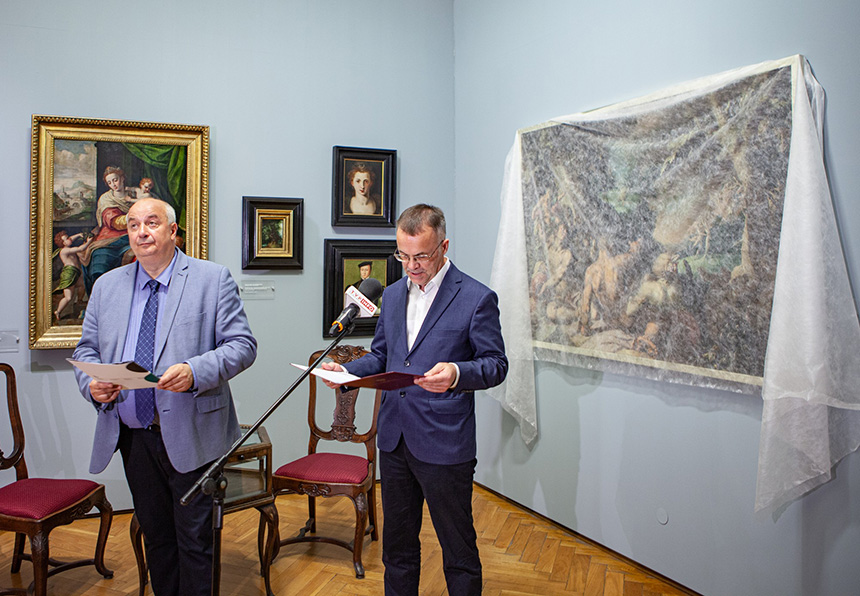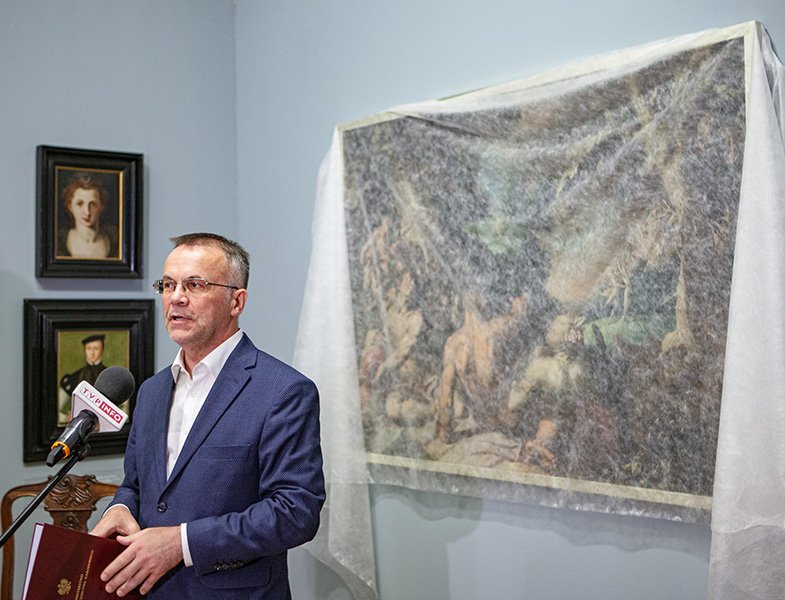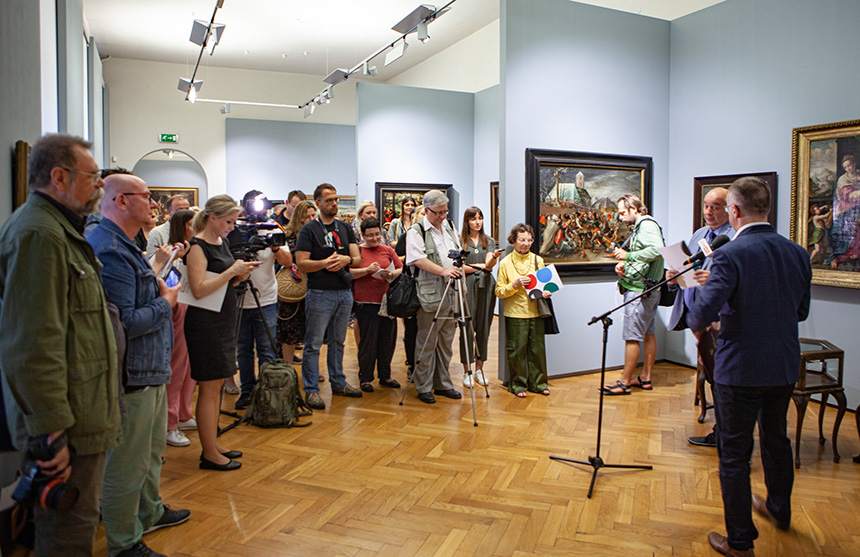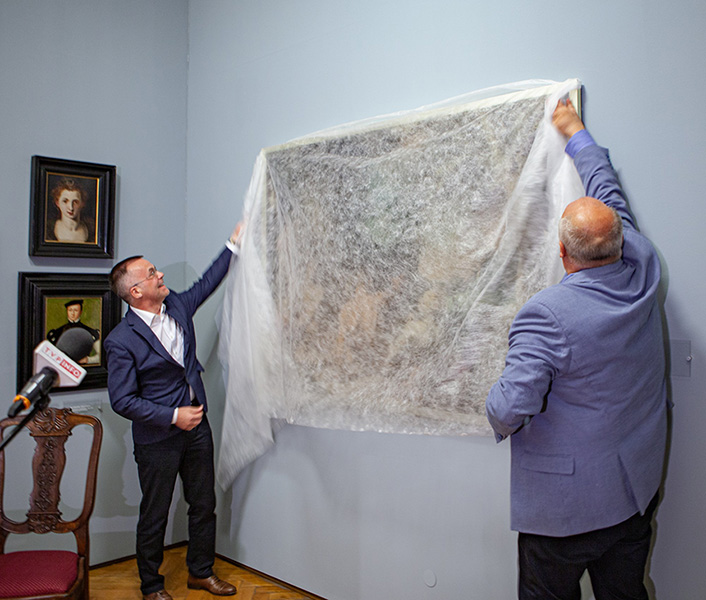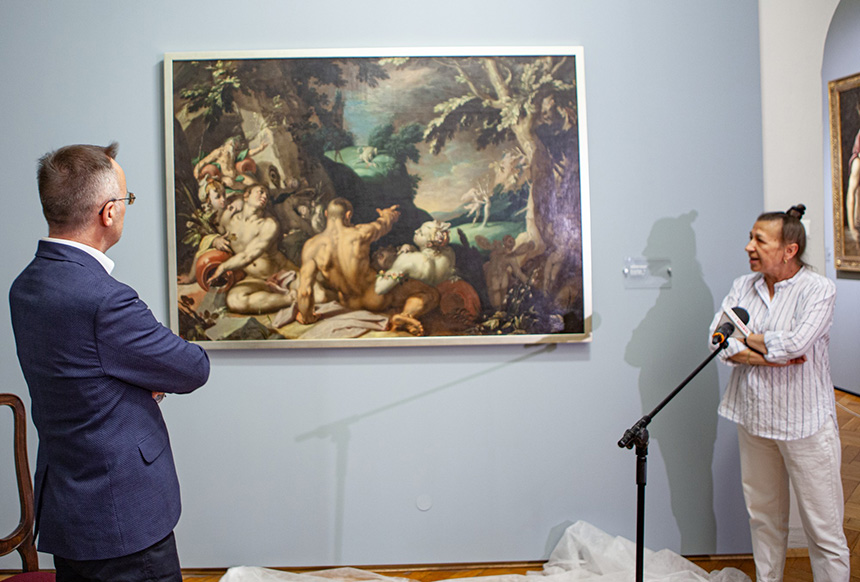The department of culture has regained possession of a precious 16th century painting which had made up part of the pre-war Wrocław museum collection. “The History of Apollo and Daphne” painted in 1592 by Abraham Bloemaert – according to the mythological scene described by Ovid – was officially handed over by the Deputy Minister for Culture and National Heritage Jarosław Sellin to the National Museum in Wrocław on 21 June 2019. This is the first ever case when a work of art constituting part of Polish war losses has been recovered following a favourable court ruling.
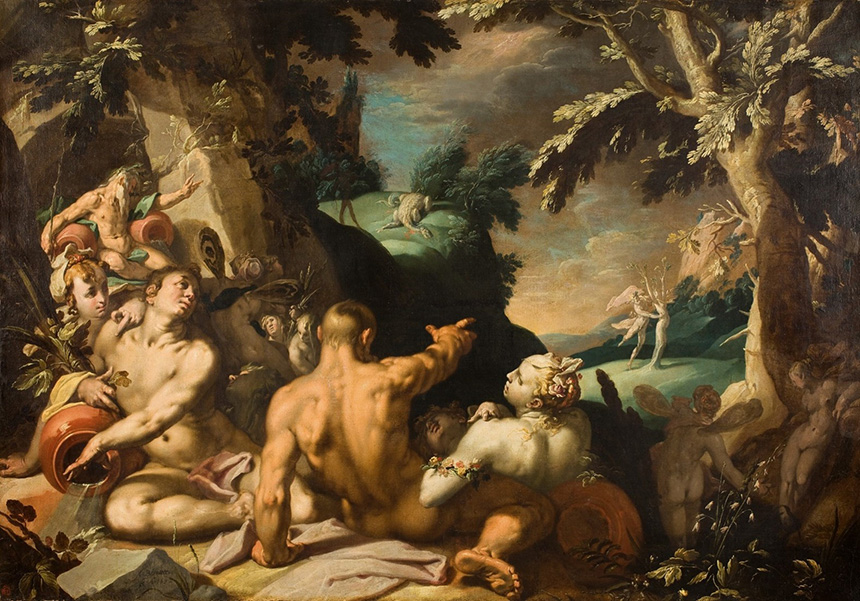
Deputy Minister Jarosław Sellin pointed out the complicated fate of the returned painting whose history combines many significant strands illustrating the turbulent paths of the pursued historical artefacts, and the complexity of the process of the restitution of Polish war losses.
– This valuable work was returned to the State Treasury following some years of legal proceedings, which is undoubtedly one of the most testing and complex paths of restitution. It is particularly worth stressing that this is the first successfully concluded court cases whose subject was a work of art constituting part of Polish war losses – commented the Deputy Minister.
Jarosław Sellin also stressed the fact that the Ministry of Culture and National Heritage is continuously involved in the effort to trace lost works of art and return them to their rightful place.
– The return of this artefact to its original location has been achieved owing to the work and commitment of many persons. I would like to express my sincere appreciation to Piotr Oszczanowski for drawing the Ministry’s attention to this matter and for his contribution to tracing many other artefacts which constituted part of Wrocław’s war losses – said the Minister, addressing the Director of the National Museum in Wrocław.
– We have just witnessed the return of one of the most valuable paintings that had ever been part of the pre-war museum collections in Wrocław – said Director Oszczanowski. – It would be difficult to name a more Mannerist composition, a more sophisticated way of painting, a more refined play of light and shade, and a more exciting story of divine weaknesses. All of these are present in this painting, the flagship work representative of the entire late Netherlandish Mannerism, and which had seemed to be irretrievably lost. The galleries in the National Museum in Wrocław already display works by leading European artists of the modern era such as Cranach, Tintoretto, Bronzino, Floris, Spranger, Jordaens, Teniers, Zurbarán, Breughel and Chardin, and from today they are joined by this fascinating picture painted by Bloemaert. This only adds to my profound gratitude to the Ministry of Culture and National Heritage, expressed in the form of thanks given to Deputy Minister Jarosław Sellin who is present here today – for all the effort and effectiveness of the undertaking to restore the possession of the painting to our Museum.
Foto Arkadiusz Podstawka
History of the painting
The picture, painted by Abraham Bloemaert, remained in the collection of the Silesian Museum of Fine Arts in Wrocław ( then Breslau) up to the start of the Second World War. The painting was originally gifted in 1874 to the local Commission for Museum Affairs and Academia by the local councillor Kern on condition of transferring it to the then planned museum of art which in fact took place in 1877. For the following 65 years the picture was the centerpiece of the Museum’s collection of European painting. In June 1942, together with the other artefacts, it was put into safe-keeping in the museum depository located in the church of the Cistersian Abbey in Kamieniec Ząbkowicki, where happily it survived the war and remained until the end of 1945. At that time parts of the collections were dispersed, destroyed and looted by soldiers of the Red Army, while others were stolen. The fate of “Apollo and Daphne” remained unknown until 2009 when an offer to sell the painting was made to the National Museum in Wrocław. The negotiations carried out with the then owner of the canvas did not produce any results, therefore the Ministry of Culture decided to initiate the court proceedings which finally came to a successful outcome this year. This is the first of its kind court trial won regarding a work of art constituting part of the Polish war losses.
The historical context
Most of the works of art lost as a result of the Second World War did not make their way abroad but remained in Poland, and they are rediscovered here after many years. As the outcome of the international treaties signed following the end of the war and the resulting changes of its national borders, Poland was awarded the legal rights to the cultural heritage located in public collections in the territories which previously had not belonged to the Polish state. Thus the war losses borne by the public collections in Wrocław, Szczecin and Gdańsk constitute Polish war losses.
The recovered works of art from the Wrocław collection
This painting is not the first case of Wrocław war losses recovered by the Ministry of Culture and National Heritage. In recent years the National Museum in Wrocław, owing to the effort of the Ministry in collaboration with organs of the law, has regained the possession of: the miniature by Lizinka de Mirbel “Portrait of a Lady”, the painting by Robert Śliwiński “The Street with Castle Ruins”, and “Via Cassia near Rome” by Oswald Achenbach. Other lost works of art from the pre-war public collections in Wrocław are still being pursued.
